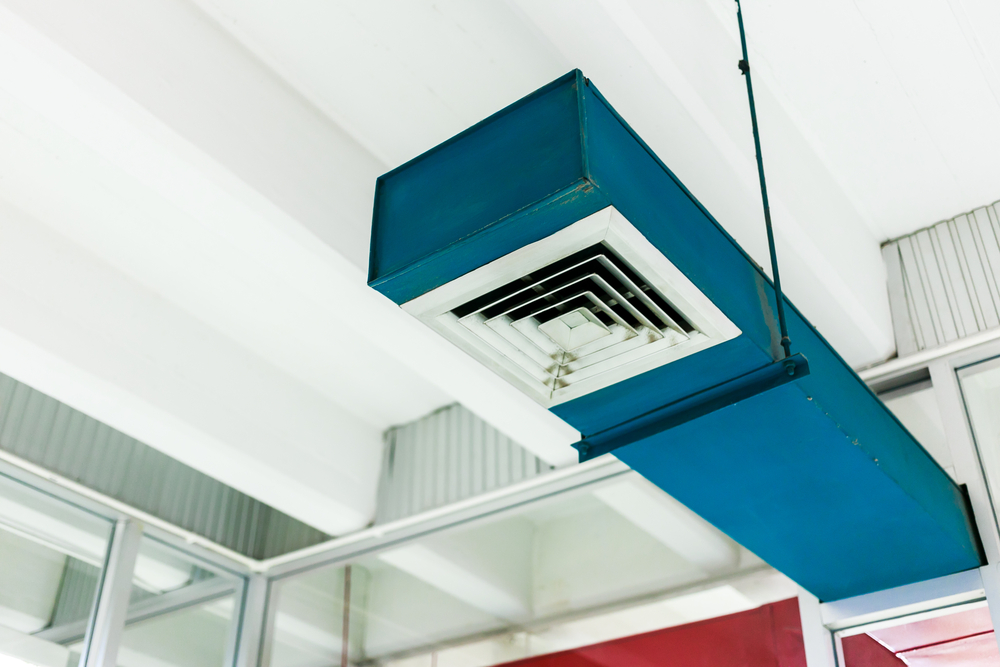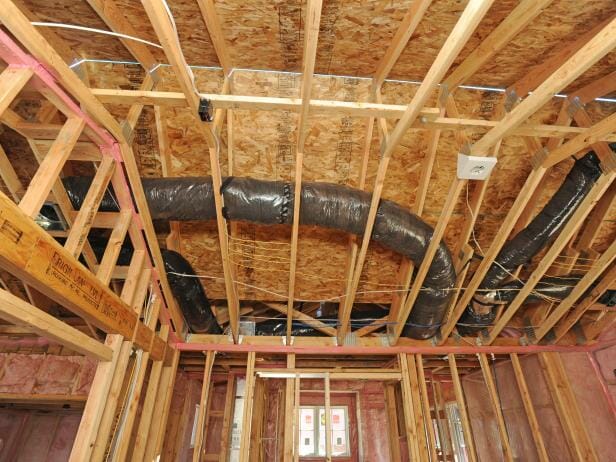Are you doing an HVAC project?
Modernize can pair you with three to four pros in your area, so you can compare options and save time and money.
Your HVAC unit’s air supply and return does a lot of behind-the-scenes work to keep your system working efficiently. It maintains air pressure, air quality, and air circulation through your home, and also helps your system work more efficiently. And that helps you save money. In this article, we tell you all you need to know about supply and return registers, and the best place to put them for the best HVAC efficiency.

The Difference Between Air Supply/Return Ducts and Registers
Your home actually has two different kinds of air vents: supply registers and return registers. To understand why you need to know a little bit about how HVAC units work.
Your unit’s ducts push heated or cooled air into a room — that’s the “supply” part. But they can’t just keep pumping your home’s interiors with conditioned air. That would cause air pressure to build up to uncomfortable levels.
To solve that problem, your ductwork also contains a “return” system, which pulls conditioned air from your home and draws it back into your unit. From there, it can be reheated or re-cooled and pumped back into your home’s interiors.

Not only does that improve air pressure, but it also helps circulate air, keeping it fresh and filtering out dust and other particles. In fact, it even helps your unit work more effectively — as long as return registers are properly placed around your home.
How Return Systems Make Your HVAC More Efficient
When there’s a big difference between the temperature on the thermostat and the temperature of the air in your home, your unit’s going to work harder, which uses more energy. That’s why drafts and air leaks drive up your energy expenses.
A well-placed return system pulls conditioned air from your home’s rooms and cycles it back into your unit. Once there is not much of a difference between your home’s internal temperature and the thermostat dial, your unit can recycle the same air through your system. That saves energy, and in turn, money.
An HVAC Register Will Boost Efficiency When Placed Properly
There are a couple of factors that play into the efficiency of your return system and your unit as a whole.
Ideal HVAC Register Placement
Most systems work a lot more effectively when there’s both a return line and a supply duct in the same room. Unfortunately, that’s not how every home was designed. A lot of spaces simply have the main return line located in a central hallway.
If that’s how your home was built, you basically have two options: you can simply live with the inefficiency, or you can have an HVAC professional out to extend the line into each room.
Find the Right Contractor for Your HVAC Project
Whether you’re ready to begin your project now or need some expert advice, our network of contractors are here to help. With a few simple questions, we’ll find the best local professionals for you
Should I Pay to Change My HVAC Register Location?
It depends on how much the return register placement affects your comfort.
In some homes, the air feels stale and unhealthy. Is adding a new HVAC register location out of your budget? Make sure your interior doors have large gaps beneath them so air can flow out of the room even when the door is shut.
Where Should the HVAC Register Be on Each Wall?
Because heated air rises, return registers should be installed high on the wall. In the summertime, the return registers will be well-positioned to pull the hottest air out of a room.
Don’t run your AC all that much or don’t even have a cooling unit in your home? Then low-to-the-ground registers may be the best way to go.
Return registers also perform best on an interior wall — not one adjacent to the outdoors. Instead, that’s where your supply registers should be, ideally under a window.
Lastly, make sure the return registers aren’t too close to the supply registers. The return registers could funnel off conditioned air before it has a chance to circulate around the room.
How Do I Tell a Supply Register and a Return Register Apart?
It’s actually pretty easy.
Supply vents are usually smaller. If you look inside a supply vent, you’ll see slats running perpendicular to the fins on the grill. They also don’t need a filter; that’s only for return vents.
You can also tell them apart by performing a paper test. If you place a piece of paper in front of the vent, and it blows outward, you’re looking at a supply register. If it does the opposite, it’s a return register.
An HVAC contractor will be able to tell you if putting an HVAC register in each room will save you energy and money.
Find the Right Contractor for Your HVAC Project
Whether you’re ready to begin your project now or need some expert advice, our network of contractors are here to help. With a few simple questions, we’ll find the best local professionals for you
Reviews from Real Homeowners
Welcome to Homeowner Resources! We are the Modernize blog. Modernize pairs more than 3 million homeowners a year with pre-vetted contractors in their area. This blog started because we believe homeowners should know everything about their homes, from how their HVAC works to which front door colors they might love. On Homeowner Resources, you can find information on every part of your home, right down to how you can negotiate with contractors to get the best price. Here's more about the blog.
Need a contractor? Learn more about how Modernize finds the right pro for you.




